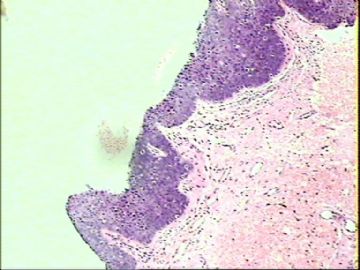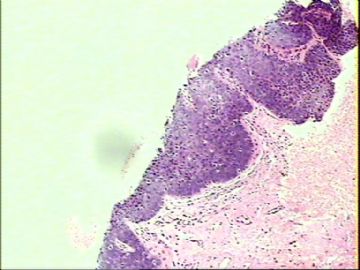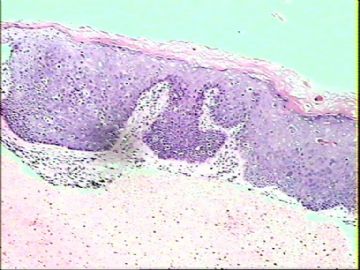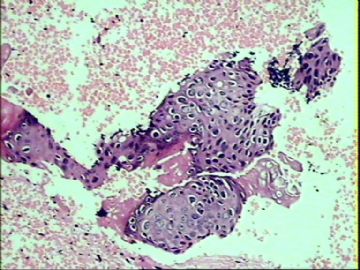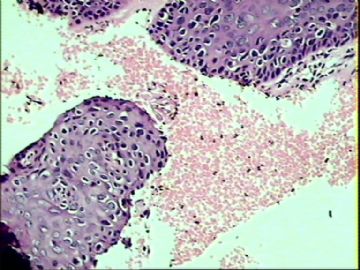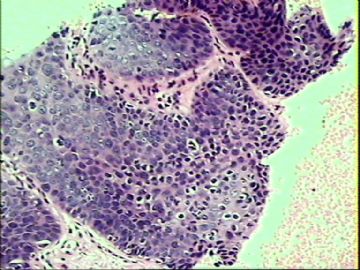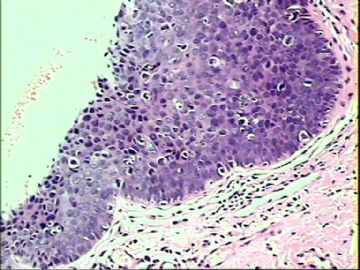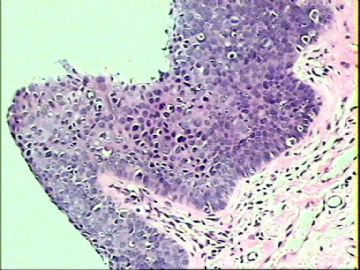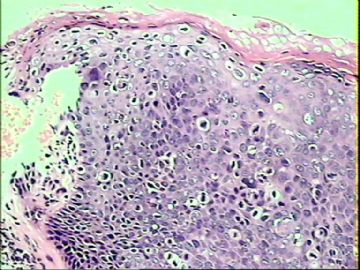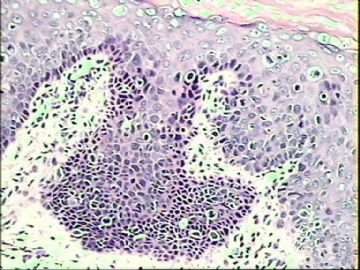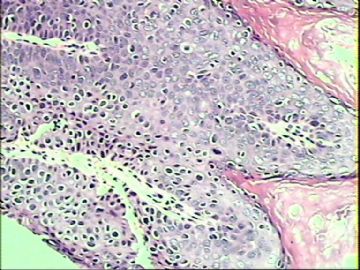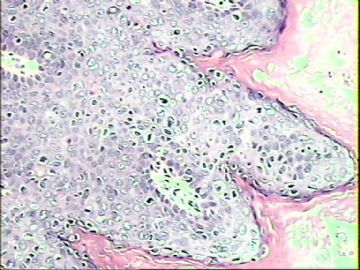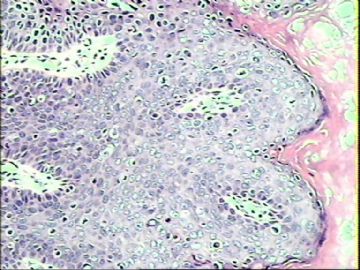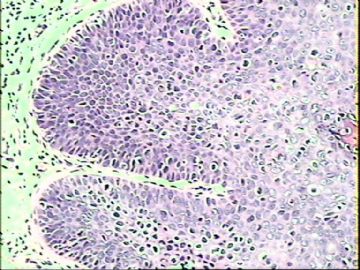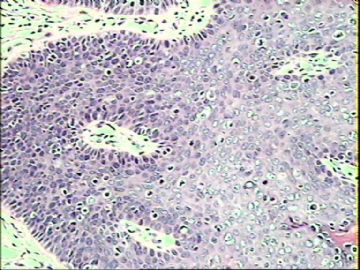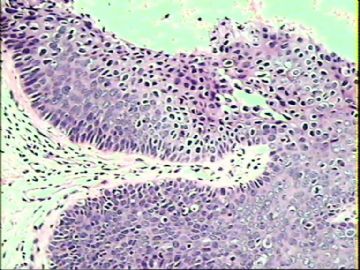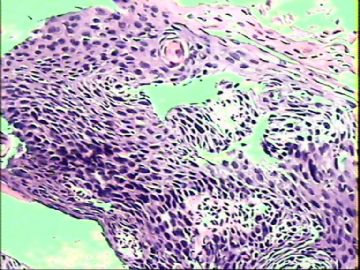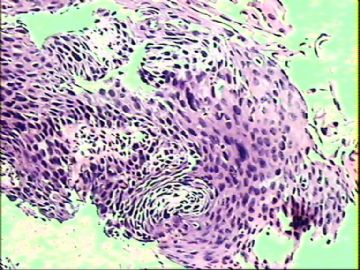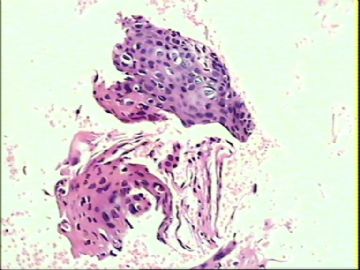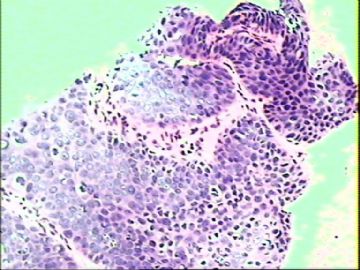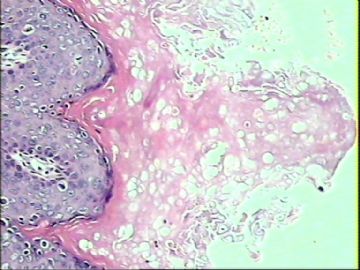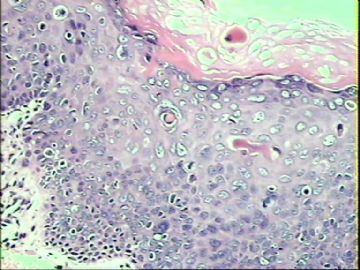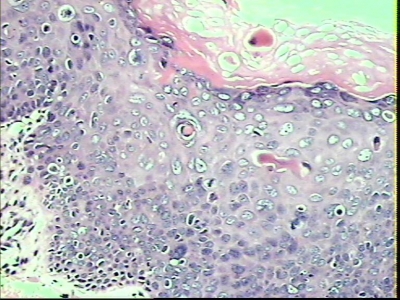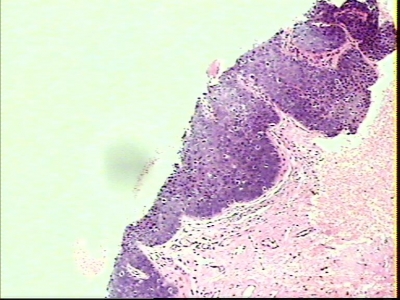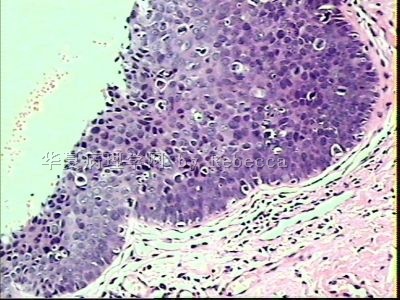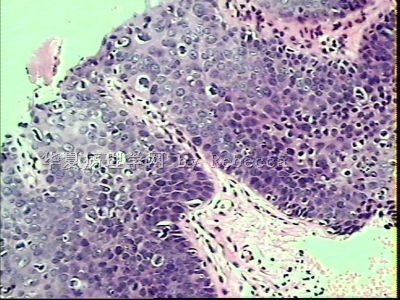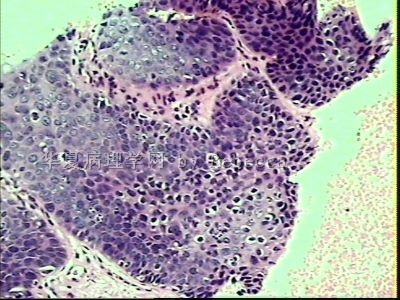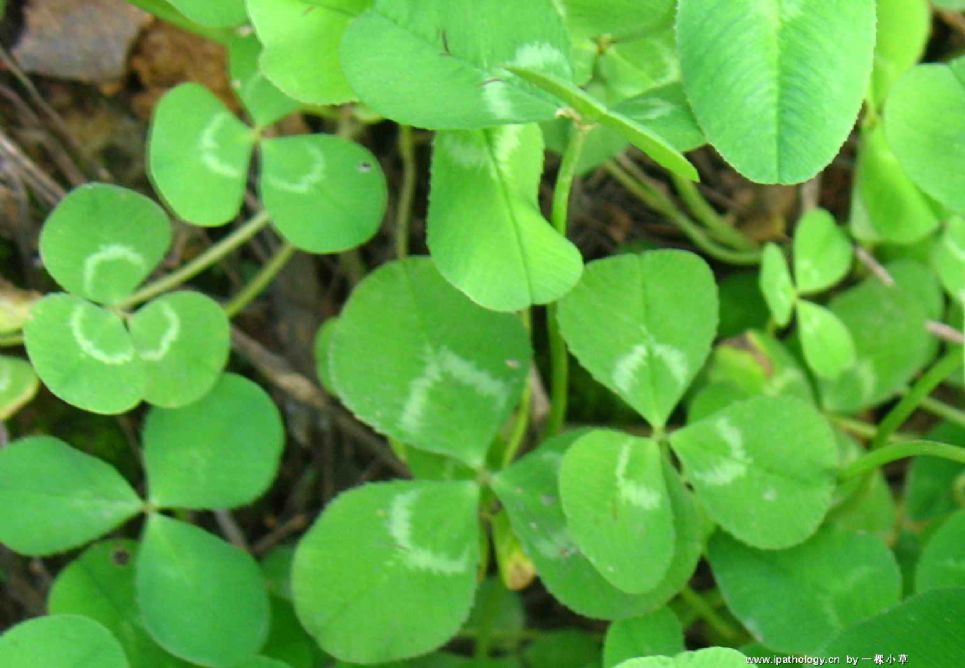| 图片: | |
|---|---|
| 名称: | |
| 描述: | |
- ‘外阴白斑’活检1例(VINIII第二次手术标本病理会诊报告 2010-09-29)
Rewiew for Vulvar Intraepithelial Neoplasia VIN
The term Vulvar intraepithelial neoplasia (VIN) refers to particular changes that can occur in the skin that covers the vulva. VIN is not cancer, and in some women it disappears without treatment. If the changes become more severe, there is a chance that cancer might develop after many years, and so it is referred to as a precancerous condition.
ISSVD Classification
Medically speaking, the term denotes a squamous intraepithelial lesion of the vulva that shows dysplasia with varying degrees of atypia. The epithelial basement membrane is intact and the lesion is thus not invasive but has invasive potential.
The terminology of VIN evolved over several decades. In 1989[2] the Committee on Terminology, International Society for the Study of Vulvar Disease (ISSVD) replaced older terminology such as vulvar dystrophy, Bowen's disease, and Kraurosis vulvae by a new classification system for Epithelial Vulvar Disease:
Nonneoplastic epithelial disorders of vulva and mucosa:
Lichen sclerosus
Squamous hyperplasia
Other dermatoses
Mixed neoplastic and nonneoplastic disorders
Intraepithelial neoplasia
Squamous vulvar intraepithelial neoplasia (VIN)
VIN I, mildest form
VIN II, intermediate
VIN III, most severe form including carcinoma in situ of the vulva
Non-squamous intraepithelial neoplasia
Extramammary Paget's disease
Tumors of melanocytes, non invasive
Invasive disease (vulvar carcinoma)
Diagnosis
The patient may have no symptoms, or local symptomatology including itching, burning, and pain. The diagnosis is always based on a careful inspection and a targeted biopsy.
Treatment
The treatment of VIN is local to wide excision, in case of very extensive involvement or recurrency even a simple vulvectomy. Laser therapy has also been useful for VIN.
Additional images:
Micrograph of vulvar intraepithelial neoplasia III or Grade 3 (VIN 3). H&E stain.
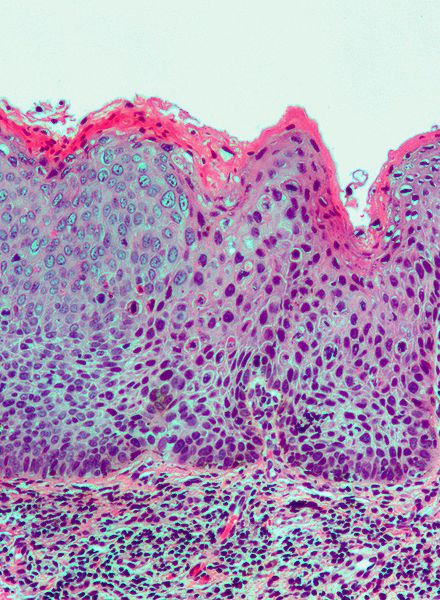
名称:图1
描述:图1

名称:图2
描述:图2

名称:图3
描述:图3

- 三十功名尘与土,八千里路云与月。
-
(Squamous) vulval (or vulvar) intraepithelial neoplasia (VIN) is a pre-cancerous skin lesion of the vulva, and was previously known as Bowen's disease of the vulva.
The presence of abnormal cells may occur anywhere on the vulvar skin. VIN is not invasive cancer but may eventually become invasive squamous cell cancer if left untreated.
In 2004, the International Society for the Study of Vulvovaginal Diseases (ISSVD) has reclassified VIN. The term VIN 1, previously used to describe a mild change in the lower epithelial lining, will no longer be used - these changes have been found to be due to irritation or non-precancerous viral wart infection. The term VIN now refers to high grade abnormal squamous lesions only (these were previously known as VIN 2 and VIN 3).
VIN (usual type) can be described by the pathologist as warty, basaloid or mixed. These types of VIN are due to infection with cancer-forming (oncogenic) types of human papillomavirus.
A less common ‘differentiated’ type of VIN is not caused by human papillomavirus and is associated with rapidly growing squamous cell carcinoma.
VIN, unclassified type, is rare and is of unknown origin.
很抱歉,没有太多的时间来翻译它们。不是很难懂的,让我们大家一起来学习或复习吧。

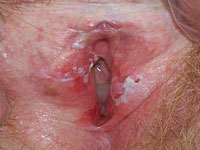
名称:图1
描述:图1
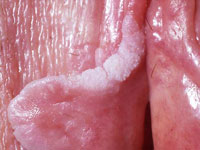
名称:图2
描述:图2

名称:图3
描述:图3
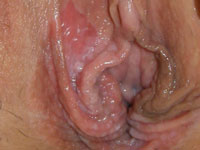
名称:图4
描述:图4

- 三十功名尘与土,八千里路云与月。
归纳与小结
病理组织学主要表现为:鳞状上皮内高度瘤变、病理核分裂像活跃,角化过度、角化不良(上皮内细胞角化珠出现,又称鲍温氏细胞)、角化不全,真皮乳头增生增宽形成围裙样改变。
外阴上皮内瘤变(VIN)是外阴阴道疾病研究国际学会(ISSVD)于1989年拟定的外阴疾病系统分类其中一术语。它代替了过去外阴萎缩、鲍温氏病及kraurosis vulvae一系列这些传统术语。
VIN根据病理组织形态学又分为:
VIN I 轻度
VIN II 中度
VIN III 重度及包括外阴原位癌
我们在临床上不大见到VINI的情况,究其原因可能是VINI处于一种轻度病变状态,缺乏临床症状与表现,它容易被忽略,对应宫颈CINI来说。走笔到此深为细胞学之父——巴氏所创造发明的Pap Test仰止。
2004年,ISSVD对VIN进行了重新归类。以前用来描述上皮内轻度瘤变的VIN 1将不再使用,因这类变化被认为是由于刺激因或非癌前疣状病毒感染所致。目前VIN一词指的是高级别鳞状上皮内的不正常病变(即已知的VIN2、VIN3)。
鲍温氏病乃鳞状上皮内的原位癌(CIS)。VIN III涵盖了外阴原位癌。因而它们可以视为等同术语。所以该例诊断Bowen's Disease也是可以的。
ISSVD分类术语是比较经典,它能反应及体现外阴阴道疾病谱系。VIN一术语也能从病理组织学上阐述并对应临床。所以我们应接受它,无论文献查询及撰写论文都是必要的。
VIN治疗原则上是手术切除局部病灶,激光治疗,5-氟尿嘧啶软膏等。
该例将在活检创面愈合后,局部用5-氟尿嘧啶软膏治疗、随访。有可能将在3-6个月后进行第二次
手术切除残留的病灶;如是,我们将再次回到这里来继续。
D.D
外阴的乳腺外Paget‘s病
它是非常罕见。病理基础表现在正常鳞状上皮内有迁徒移行来的孤立的腺癌导管上皮,有认为可能是来自巴氏腺。

- 三十功名尘与土,八千里路云与月。
Agree with VIN 2-3.
You can do mucin stain to exclude extramammary Paget's disease, and do melanoma markers to exclude melanoma in-situ.
VIN is a little different from CIN: VIN occurs in skin, could be caused by HPV infection and non-HPV infection (for example p53 mutation), CIN is caused by HPV. Especially in older women, there is a type of high grade VIN (differentiated VIN) is not caused by HPV.

